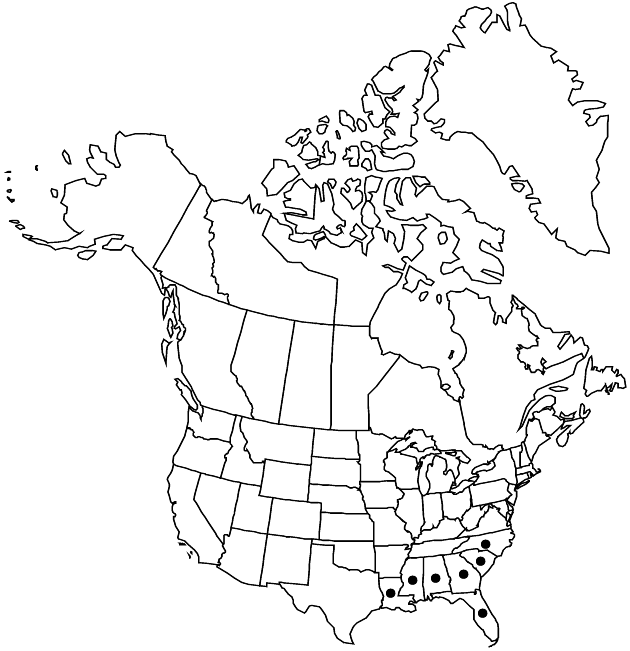Difference between revisions of "Carphephorus odoratissimus var. odoratissimus"
Treatment appears in FNA Volume 21. Treatment on page 537.
FNA>Volume Importer |
imported>Volume Importer |
||
| Line 41: | Line 41: | ||
|publication year= | |publication year= | ||
|special status= | |special status= | ||
| − | |source xml=https:// | + | |source xml=https://bibilujan@bitbucket.org/aafc-mbb/fna-data-curation.git/src/bb6b7e3a7de7d3b7888a1ad48c7fd8f5c722d8d6/coarse_grained_fna_xml/V19-20-21/V21_1362.xml |
|tribe=Asteraceae tribe Eupatorieae | |tribe=Asteraceae tribe Eupatorieae | ||
|genus=Carphephorus | |genus=Carphephorus | ||
Revision as of 20:56, 27 May 2020
Plants with strong odor of coumarin or vanilla. Basal leaves usually more than 15 × 5 cm; midstem leaves broadly elliptic, apices flared away from stems, margins often shallowly dentate. Primary head-bearing branches diverging from main axes at 10–20°. Florets mostly 7–10.
Phenology: Flowering (Aug–)Sep–Oct(–Nov).
Habitat: Pine-oak borders, longleaf pine savannas, flatwoods, fields, roadsides, fencerows, stream bottoms, seepage and boggy areas, sandy sites, limestone ridges or clay hills
Elevation: 0–80 m
Distribution

Ala., Fla., Ga., La., Miss., N.C., S.C.
Discussion
Selected References
None.
Lower Taxa
None.
... more about "Carphephorus odoratissimus var. odoratissimus"